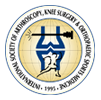Direct Anterior Approach Total Hip Replacement is sometimes known as Anterior Minimally Invasive Total Hip Replacement.
The key feature of Direct anterior approach or Minimally-invasive Total hip replacement (DAA-THR) compared to other approaches is that it does not involve cutting or detatching muscle or tendon. The approach is inter-nervous and inter-muscular. Theoretically this minimally invasive approach could result in faster recovery, earlier mobilisation and less risk of dislocation. A key benefit is also the ability to achieve and verify accurate restoration of limb lengths. Recently published high quality medical literature including a meta-analysis support some of these claims in the short term. Previously active patients with advanced hip arthritis and pain can expect earlier return to walking, driving, non-impact/contact sport with DAA-THR compared to other approaches.
Dr Reddy routinely performs DAA - THR in his patients. However not everyone is suitable for the approach. He will discuss with you the benefits, risks and contra-indications of DAA-THR at the initial consultation. Here he has collated a list of the most frequently asked questions from patients.
What does Direct Anterior Approach mean – is it a new invention?
Total hip replacement (THR) is a hugely successful operation to relieve pain and improve/restore function, mobility,activity and quality of life. It is indicated in painful hip arthritis as well as other condition including fractures, avascular necrosis and hip dysplasia, amongst others.
THR can be performed through different approaches:
- Posterior approach: Approaching the joint from the back of the hip. Worldwide this is the approach most used by Orthopaedic Surgeons. It is an excellent and reproducible approach but involves detaching the posterior capsule and some muscles/tendons that are repaired later. There is increased incidence of hip dislocation compared to other approaches, some of which require reoperation.
- Direct lateral approach: Requires detachment and later reattachment of the hip abductor tendon. Limp and gait abnormalities are more common with this approach which usually resolves with time.
- Direct anterior approach (DAA): Though this is not a new approach, its benefits in THR have been more widely realised in the recent few years. A summary of this approach, merits and challenges are discussed further below.
All of the above approaches have a long history and can be safely used to perform THR. The recently popularised DAA – THR too has been in use for over 20 years, especially in Europe. Introduction of efficient instrumentation, use of proprietary surgical tables by some surgeons and better surgeon training have allowed its increasing use in hip replacement surgery.
What are the benefits of Direct-Anterior Approach in Total Hip Replacement?
- I believe the key benefits with supine direct anterior approach are the reduced incidence of hip dislocation/instability and ability to achieve and to verify accurate restoration of limb lengths. This helps achieve an excellent functional outcome. It has to be pointed out that published medical studies have shown that DAA patients performed better in the early post-operative periods with lower pain scores and more patients walking unlimited and climbing stairs at 6 weeks. But there are no statistically significant functional differences in the later periods.
- Earlier mobilisation and decreased post-operative pain.
- Shorter hospital stay was found in some studies, but patient expectation, accelerated rehabilitation protocols and selection bias could contribute to this result.
- Less hip precautions required. Traditional precautions following THR using posterior approach include avoiding sitting in low chairs, avoiding bending, raised toilet seat and car seats. These precautions are not required with DAA-THR. No post-operative pillow use is required with DAA. The only precaution is to avoid external rotation beyond 45 degrees. As a matter of fact, stability during DAA-THR is checked with external rotation to 90 degrees and 45 degrees is well within stability limits.
- Less muscle damage with DAA compared to other approaches in biochemical and MR imaging studies.
What are the challenges and risks with Direct Anterior Approach to Hip Replacement?
The main challenge with Surgeons adopting DAA-THR is the long learning curve. Exposure of the femur and proper implantation of the femoral component is technically challenging and requires systematic training, skill and experience.
Results from the Australian National Joint Replacement Registry found that rate of revision surgery for complications is slightly higher during this learning curve.
Injury to lateral femoral cutaneous nerve (LFCN) has been well published in literature, but this can be minimised with careful technique and due diligence intra-operatively. Increased incidence of greater trochanteric and calcar (proximal femur) fractures has been reported, more so in the surgeon’s learning curve.
The approach is also difficult in the very muscular patient as well as obese individuals. Certain anatomic characteristics of the hip joint also make this approach difficult.
Dr Reddy is well trained in DAA-THR and offers it to his patients taking all of the above issues into consideration to provide the best possible outcome for his patients.
Here is what the Arthroplasty Association of Australia said in its Position Statement on Hip Replacements in Oct 2016:
- There is no published level 1 (highest level) scientific evidence that endorses one surgical approach over the other.
- The different surgical approaches have advantages and disadvantages which maybe patient specific. No surgical approach is without risk.
- Surgical approach has little influence on results in the short or long term.
- A long lasting and successful result can be achieved with a total hip replacement done through any of a number of different surgical approaches.
- Patients are well advised to allow the surgeon to decide which approach is most appropriate in their case.
Related Topics







